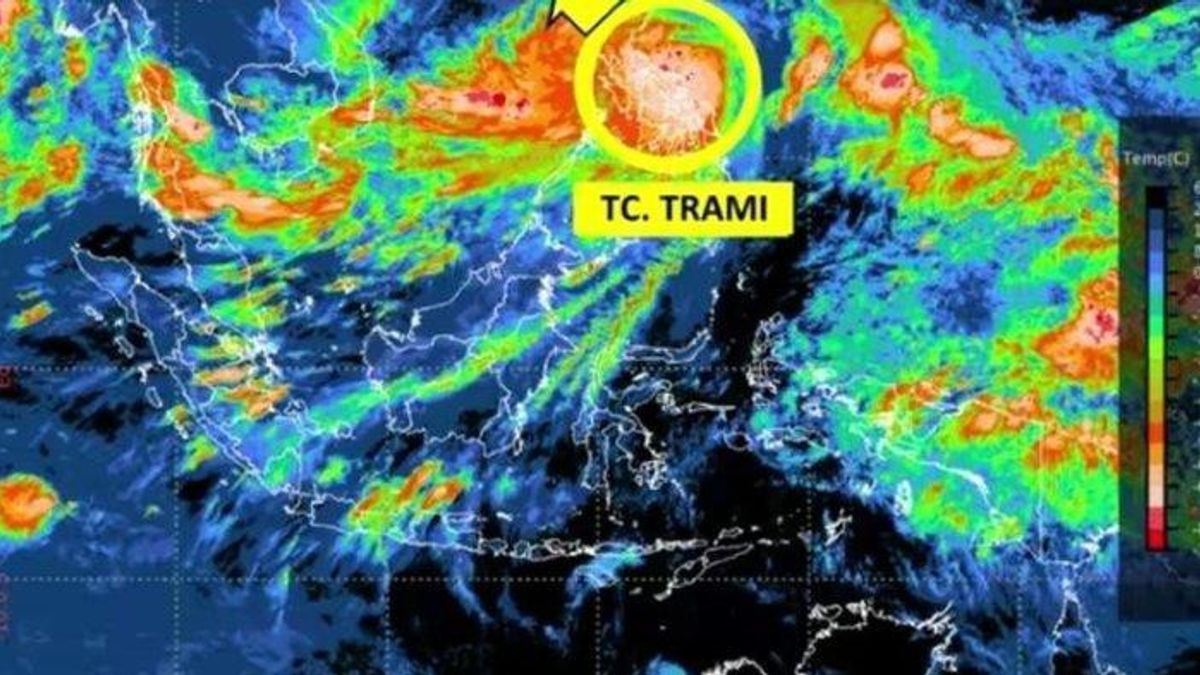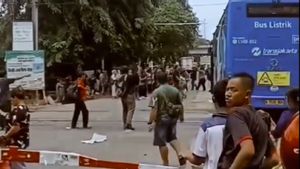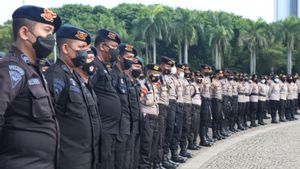YOGYAKARTA - BMKG detected the impact of tropical cyclone Trami that could hit Indonesia. It reminded the public to be aware of the potential for strong winds to be more than 25 knots or 46.3 kilometers in a number of coastal areas in Indonesia due to the storm. It was observed that in the last few hours the storm was in the Philippine Sea.
The BMKG team explained that the potential for strong winds is predicted to lead to the east coast of East Kalimantan, east coast of North Kalimantan, North Sulawesi, northern Makassar Strait, and North Maluku. The potential for strong winds in a number of areas is expected to last in the next few hours until early morning.
At the same time, BMKG reminded fishermen or shipping when to increase awareness of the indirect effects of tropical cyclone Trami. This impact can cause sea waves which are 1.25 meters-4 meters high in Indonesia. So what is tropical cyclone Trami and which areas are affected?
Tropical Cyclone Trami is one of the tropical cyclone weather systems that occurred in the western region of the Pacific Ocean. The storm first formed in September 2018 and became one of the major storms that caused significant impacts in the East Asia region, particularly Japan and Taiwan.
Trami developed into a powerful tropical storm with winds reaching speeds of up to 215 km/h. At its peak, Trami reached Super Typhoon status, which is the highest classification for tropical storms. This storm causes strong winds, heavy rains, floods, as well as disruptions in transportation and infrastructure in the countries it passes through.
According to the BMKG, the tropical storm trami occurred due to the increasing impact of the maximum wind speed of this storm in category II and blowing from the northwest away from Indonesia. This storm will have an indirect impact in some areas in northern Indonesia.
The potential for sea waves as high as 1.25 - 2.5 meters is estimated to be able to target the Sulawesi sea area, the northern Makassar Strait, the waters of the Sangihe Islands to the Talaud Islands, the Maluku Sea, the waters of the Sitaro Islands to Bitung, the Halmahera Sea, the western and northern waters of Halmahera.
Meanwhile, waves with a height of 2.5 meters - 4 meters are predicted to lead to the northern Pacific Ocean and West Papua. The following are some areas in Indonesia that have the potential to be hit by tropical storms Trami:
In order to increase vigilance and security, here are some of the impacts of tropical cyclones:
Tropical cyclone Trami can cause high rainfall to potentially cause flooding in many areas.
Heavy rains due to the tropical cyclone Trami phenomenon can increase the potential for landslides. Areas on the slopes are at risk of landslides that can damage houses, roads, and endanger the safety of residents around the region.
High rainfall during tropical cyclone Trami is often followed by strong winds, which can cause damage to infrastructure such as roads, bridges, and drainage systems. Electricity outages are widespread as electric poles collapse and damage to the energy distribution network.
Floods and road damage have caused disruptions to transportation, cutting many travel routes which have disrupted the mobility of residents and distribution of goods. This also has an impact on the economic sector, especially in the fields of trade and tourism.
The rainy season accompanied by flooding can increase the risk of spreading infectious diseases, such as dengue fever and leptospirosis. Long-lasting puddles of water become a breeding ground for disease vectors, thus increasing pressure on health systems in affected areas.
SEE ALSO:
That's a review of what tropical cyclone Trami is like as one of the storms that Indonesians in a number of areas need to watch out for. BMKG reminds people in some areas above to be aware of the impact of this storm. Also read what tropical cyclone Yagi is.
Stay up to date with the latest domestic and other overseas news on VOI. We present the latest and updated information nationally and internationally.
The English, Chinese, Japanese, Arabic, and French versions are automatically generated by the AI. So there may still be inaccuracies in translating, please always see Indonesian as our main language. (system supported by DigitalSiber.id)










